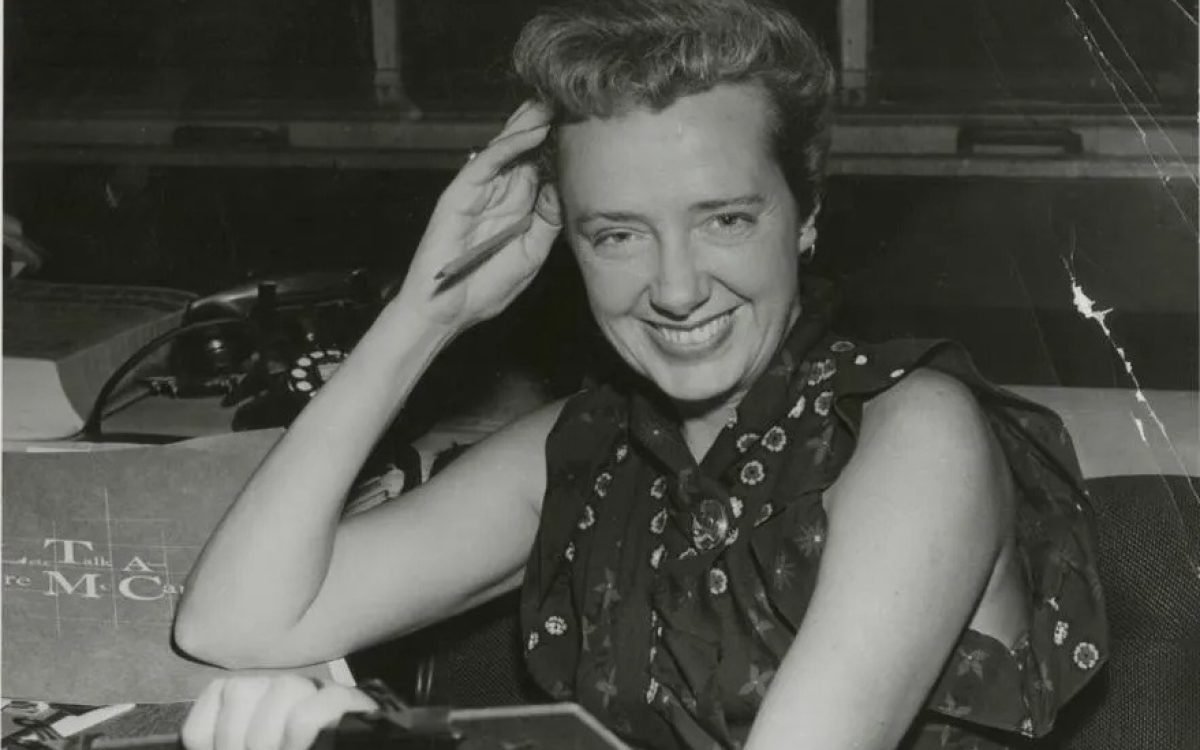For decades, Claire McCardell’s designs have quietly shaped the way women dress today—from ballet flats to wrap dresses, from hoodies to those lifesaving pockets. Yet, her name remains unfamiliar to many. With Elizabeth Evitts Dickinson’s new biography, Claire McCardell: The Designer Who Set Women Free, arriving on June 17, 2025, it’s finally time to celebrate the woman behind the wardrobe revolutions .
🥿 Ballet Flats & Activewear Innovation
In the 1940s, McCardell collaborated with Capezio to adapt ballet slippers into everyday wear—creating the first ballet flats for street fashion. These comfy flats, originally dance shoes, now adorn the feet of fashion lovers worldwide .
She also pioneered activewear before the term existed: leotards, leggings, cotton-knit separates, even hoodies entered the fashion lexicon through her groundbreaking designs .
The Popover: Forebear of the Wrap Dress
In 1942, McCardell introduced the iconic “Popover Dress”: a versatile wrap dress designed to be worn for cleaning the house or attending a cocktail party. Made of practical cotton denim, sporting a giant pocket (and even a matching potholder!), it sold 75,000 units in its first season at just $6.95—a revolutionary price for its time .
This easy elegance inspired future designers—think Diane von Fürstenberg’s wrap dress—but McCardell was the trailblazer decades earlier .
Woven Into Everyday Wardrobes
McCardell was the mother of modern women’s wardrobes, turning conventions on their head:
Pockets in women’s garments? McCardell insisted—against all male designers. Denim: She brought sturdy, everyday fabric into stylish leisurewear. Zippers in the front: She reasoned, “a woman may live alone… but you may regret it if you wrench your arm trying to zip a back zipper” .
By blending comfort with elegance, she essentially created what we now call American sportswear: clothes that perform as well as they please .
A Feminist Designer for Real Life
McCardell was more than just a designer—she was a cultural force. She championed ease and independence in fashion, creating silhouettes that moved with women—not restricted them. In 1955, young journalist Betty Friedan called her “the gal who defied Dior,” highlighting how McCardell rejected Europe’s ornate femininity in favor of real-world utility .
Yet her brand didn’t live on. McCardell died in 1958 at age 52 from colon cancer. Without an heir or appointed successor, her company closed—leaving a legacy buried beneath Dior’s shadow .
Why She Matters Today
McCardell’s name may not dominate headlines, but her influence is in every closet:
Ballet flats: now a staple of casual footwear. Wrap/pop-over dresses: accessible and timeless. Leggings, hoodies, mix-and-match separates: wardrobe workhorses. Pockets in women’s clothing: today’s absolute must-have.
Fashion historian Julie Eilber calls McCardell the “mother of modern casual and activewear—if you’ve donned ballet flats, hoodies, capri yoga pants, or wrap dresses, you’re living her legacy” .
The New Biography: A Must-Read
Elizabeth Evitts Dickinson’s debut biography, Claire McCardell: The Designer Who Set Women Free, is receiving universal acclaim:
Kirkus awarded it a starred review, calling it an “essential and inspiring account.” Library Journal praises the “formidable research” and engaging style BookBrowse lauds it as “delightfully readable”—perfect for both fashion fans and casual readers
If you love the story of a fiercely independent woman reshaping society—through her clothes—this is your next summer read.
Final Thoughts
Claire McCardell didn’t design dresses—she designed freedom. With her signature ease, practicality, and boldness, she upended women’s fashion, choreographing everyday revolution. Thanks to Dickinson’s new biography, McCardell is stepping—and dancing—back into the spotlight, reclaiming her rightful place in American fashion history.






